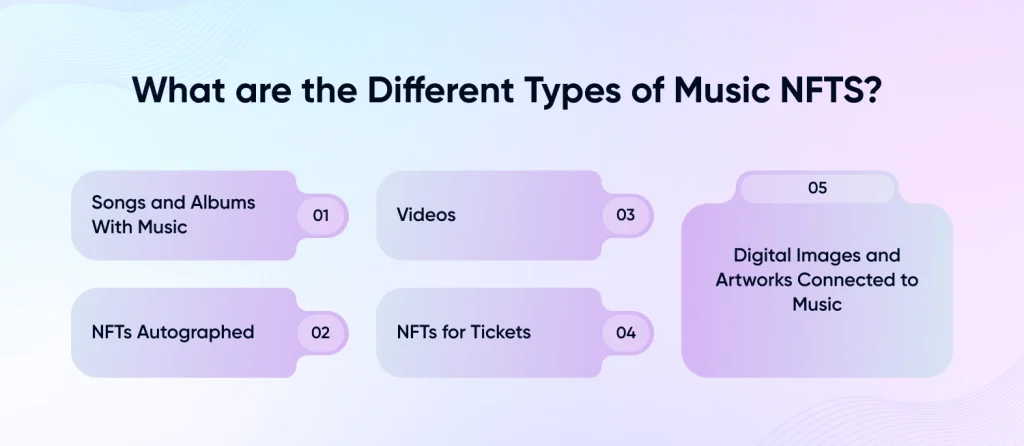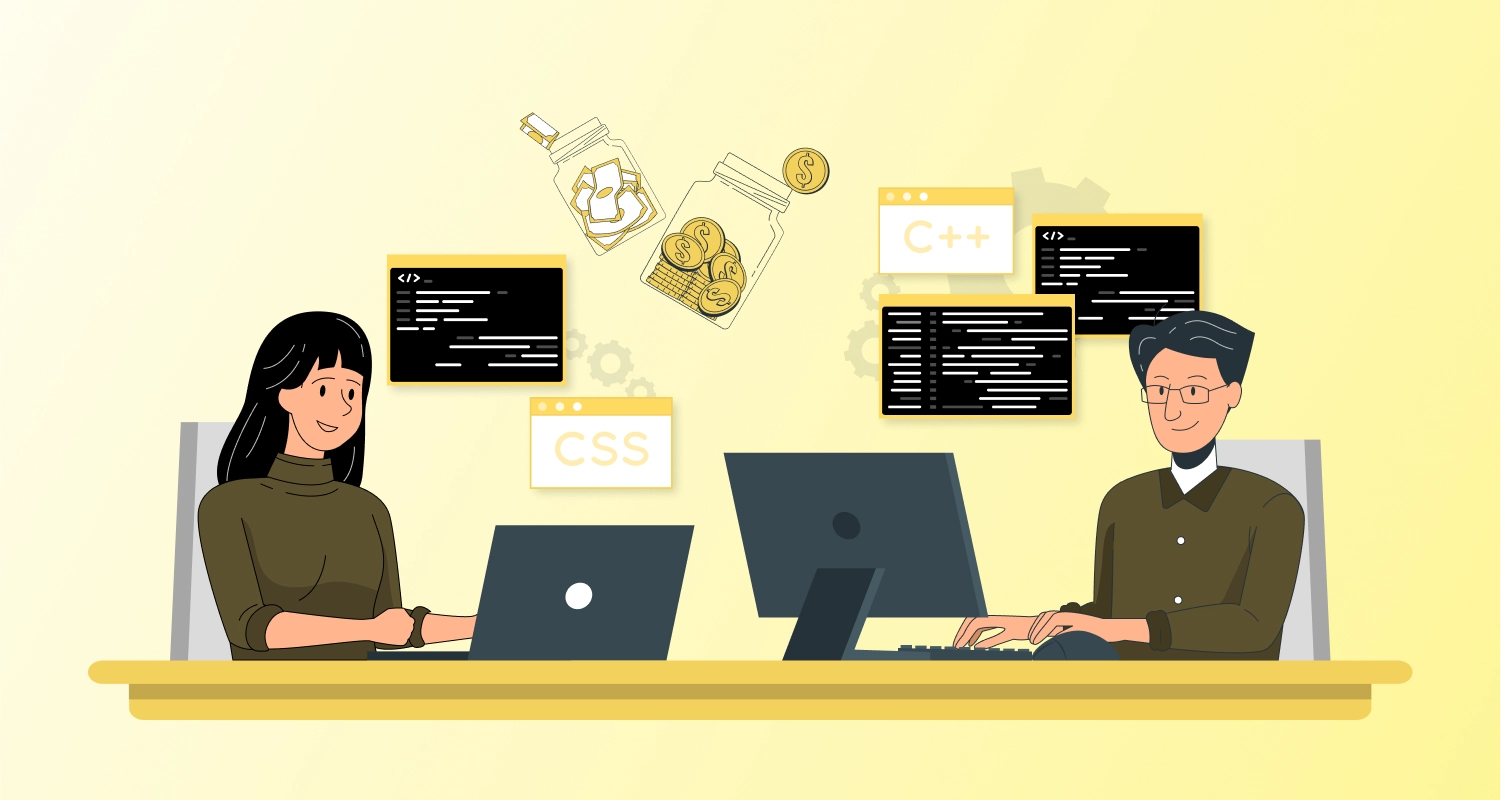In 2021, the music NFT market was valued at $1240.3 million. Furthermore, it is anticipated that this market value will increase to $42,380.2 million by 2032, at a CAGR of 27.52%. Impressive?
Non-fungible tokens have completely changed the way we view and exchange digital assets in the last few years. Whether it’s digital art, collectibles, virtual real estate, or music in our case, NFTs are distinct digital tokens that signify ownership of a certain asset. Music NFT marketplaces are becoming a ground-breaking tool for investors, innovators, and musicians alike. This blog will guide you through the necessary procedures to create music NFT marketplaces.
What Is an NFT Marketplace for Music?
Marketplaces for music NFTs are online venues where sellers and purchasers can exchange NFTs. These markets, tailored especially for music NFTs, resemble conventional online retailers like eBay or Amazon. Audius, Triptcip, Noizd Story.Xyz, Sound. Xyz, Nifty Gateway, OpenSea, and Rarible are the best music NFT platforms. It takes experience with blockchain technology, smart contract creation, non-interchangeable token development, and user interface design to create an NFT marketplace of this kind.
Every music NFT has its own digital signature, making it a distinct digital asset. This signature establishes the musical work’s qualities and attributes as well as its ownership and authorship. Exclusive rights to use and dispose of these works – which may include selling, licensing, collecting, and other uses – are granted to owners of musical NFTs.
Advantages of NFT Marketplace for Music Artists
Selling directly from the source. Through music NFT marketplaces, musicians can sell their music directly to consumers without the need for middlemen, earning a larger percentage of sales revenue than they would with a more conventional strategy.
Reasonable costs. Based on demand and worth, musicians can determine the rates they want to charge for their music, licenses, and collectibles.
Additional revenue streams. By commissioning secondary sales of the NFT assets they produce, musicians can profit from them.
NFT Marketplace Advantages for Fans
Assisting your preferred musicians. Fans can directly support their favorite performers by purchasing NFT music tokens, as opposed to having to split revenues with record labels and streaming platforms.
Access to special deals. It is possible for listeners to purchase special and one-of-a-kind music NFTs. This may be a personalized song, a VIP seat and backstage pass concert ticket, an autographed NFT, or a special album edition.
Obtaining tokens for music. Fans can purchase and amass one-of-a-kind NFTs that may appreciate in value over time and have artistic or historical significance.
Involvement in the music industry. Music NFT marketplaces give fans the chance to talk about music, engage with artists and other fans, and take part in exclusive music events.
New viewers. The music NFT marketplace offers a chance to draw in new followers and collectors who are looking for unique musical offerings.

How Music NFTs Work?
- Blockchain Technology: The provenance and originality of music NFTs are guaranteed by their construction on blockchain technology. Making and selling NFTs is a frequent use case for blockchains such as Ethereum.
- Possession and Origin: An artist effectively creates a digital certificate of ownership linked to a particular piece of music when they mint a Music NFT. This certificate is tamper-proof and unchangeable because it is kept on the blockchain.
- Transferability: Through online markets or platforms that facilitate NFT transactions, music NFTs can be purchased, sold, or exchanged.
- Royalties: The capacity to incorporate royalty procedures into the smart contracts is one of the main benefits of Music NFTs. This implies that the original artist will always receive a pre-agreed portion of the transaction or stream money whenever the NFT is transferred or music is streamed.
What are the Different Types of Music NFTS?

1. Songs and Albums with Music
Much of the Music NFT market consists of musical albums and single songs that have been turned into NFTs. It gives musicians a unique opportunity to release their music and allows listeners to buy the music’s exclusive ownership rights. As such, it opens up unique benefits for both fans and artists.
2. NFTs Autographed
For fans, autographs are treasured items. Fans can display their digital signatures in virtual collections and obtain autographs from their favorite bands and artists. As a result, there is a need for this genre of music.
3. Digital Images and Artworks Connected to Music
Artists frequently provide an audio and visual creativity package with their music NFTs. NFTs of digital images and artwork influenced by the music of their favorite artists are available for collectors.
4. Videos
NFTs of music videos, video snippets, or only available behind-the-scenes films provide fans the opportunity to possess special moments from their favorite artist’s career. These video NFTs can be resold at a standard price and offer an intimate and immersive connection between the artist and their audience.
5. NFTs for Tickets
Virtual and hybrid event ticket NFTs, available on various NFT music marketplaces, can be sold or auctioned for a very high price. In addition, an NFT ticket retains its worth beyond the performance or occasion, and enthusiasts can possess it as a fragment of music history.
How to Develop Music NFT Marketplace Your Business
The process of starting your own NFT music marketplace development is thrilling and difficult, but it also opens up a world of creative ideas for the music business. Through exchange and interaction, Music NFT Marketplaces facilitate new musical endeavors and opportunities for fans, collectors, and musicians. The procedures listed below will assist you in creating your own NFT Marketplace and advancing the music business. Now let’s get going!
Step 1: Choose Your Niche
Selecting the appropriate niche is the first step in building an NFT marketplace. Your target market, distinctive offering, and the benefits your marketplace has over competitors will all be determined by your niche. The following niches could be used to start your NFT marketplace:
- Songs and albums of music
- Greetings, and autographs
- Digital images and artwork
- Video content
- Tickets for events and concerts
Step 2: Select a Developer
Selecting a dependable and competent blockchain developer is among the most crucial phases in developing an NFT platform. The success of the project and the accomplishment of your objectives depend on the knowledge, experience, and skill set of a well-known development company. Hire NFT developers by looking at their portfolios, reviews, and recommendations, as well as their familiarity with NFT, blockchain, and cryptocurrency technologies.
Step 3: Selecting the Blockchain Platform
The next step is to select the blockchain that will power your NFT marketplace. A single blockchain would be quicker and less expensive to deploy, but it is also possible to integrate with a number of well-known networks, including Ethereum, BNB Chain, Cardano, Solana, Tezos, and Flow.
Step 4: Ascertain the Features That Your Marketplace Needs.
In order to facilitate communication between performers, fans, and collectors holding NFT music assets, the Music NFT Marketplace offers features and services. The following are some of the main functions that a music NFT marketplace can offer:
- Producing and distributing NFTs
- Advanced filtering and search
- Purchasing and Gathering NFTs
- Direct sales and NFT auctions
- Revenue sharing and licensing
Step 5: Create the Project’s Technical Architecture
The future NFT-music marketplace’s scalability, security, dependability, and development speed are all significantly influenced by the technical architecture. Microservice architecture is one of the most favored choices for these kinds of initiatives. Its foundation is the separation of functionality into discrete, self-contained services. But putting a microservice architecture into practice calls for the right tools.
Step 6: Establish the UI/UX Design
Making an easy-to-use interface that enables users to locate and buy the NFT music tokens they want is a crucial part of designing the UX/UI design for the next NFT music marketplace. This entails creating sorting, searching, filtering, and navigation features that make it easy for consumers to locate, purchase, sell, and learn about different music tokens.
To build an engaging and emotionally linked music experience on the platform, attention to the aesthetic side of the design is also crucial. Your NFT music marketplace can have a distinct look and feel if you use the right color schemes, animations, design elements, and graphic components.
Step 7: Choose the Platform’s Technological Stack
An entertainment app development company can offer you the best skilled and professional developers with high experience in the appropriate technological stack. It is crucial for creating a scalable and effective NFT music marketplace. This phase necessitates carefully weighing your options in order to provide a dependable and current platform.
Step 8: Develop Both the Frontend and the Backend
The next step in building the music NFT marketplace is to begin writing the frontend and backend code. The platform logic, transaction processing, NFT token administration, and blockchain platform interface should all be implemented in the backend. Programming languages and frameworks such as Nest.js and Node.js with Express are required for this. Using the proper tools and protocols to safeguard and authenticate users is also crucial.
Step 9: Testing
Product testing should be done once frontend and backend development is finished to make sure there are no bugs in the code, the product satisfies user requirements and expectations, and users find it easy to use and trustworthy. Functional, performance, load, integrity, security, and vulnerability testing are some examples of testing.
Best Examples of Music NFT Marketplaces
How is NFT applicable to music? Listing, purchasing, and selling NFT for music is a booming business on the NFT marketplaces. These are a few of the top music NFT marketplaces, then.
The best NFT music marketplaces include AirNFTs, PlayTreks, Origin Story, OpenSea, and Async. You can use them as guides to learn about the features, platform, monetization strategy, and other aspects of creating NFTs for music.
Conclusion
Establishing a state-of-the-art Music NFT marketplace involves a careful balancing act between technical know-how, creativity, and legal compliance. Comprehending the subtleties of Music NFTs, carrying out exhaustive market analysis, and creating a strong business strategy are essential preliminary measures.
Leading NFT marketplace developer CMARIX has previously completed a number of Blockchain projects. If you’re looking for a business that has completed NFT marketplace initiatives before, get in touch with us.
To learn more about us and how we can assist you, have a look at our dynamic portfolio or contact us with your questions.
Frequently Asked Questions
What Is the Price of Developing a Music-Focused NFT Marketplace?
The average cost of building an NFT marketplace ranges between $47,000 to $75,000 USA. The tools and technologies used, the complexity of the project, the NFT marketplace’s specialty, functionality, security features, and other factors all affect how much it costs to establish an NFT marketplace.
How Can I Earn Profit From the NFT Music Marketplace?
The ability for creators to choose their own royalty percentage on secondary sales is available on all well-known NFT music platforms. This implies that you will receive a portion of any sales made once someone purchases your music through NFT.
How Do I Launch the NFT Marketplace Development Platform for Music?
Identify a niche.
Find a developer.
Select features.
Choose a strategy.
Create UX/UI design.
Choose a technology stack.
Start the development process.
Test and deploy.
How can NFTs Benefit Musicians?
Artists are able to sell their songs directly to fans without the use of middlemen like record companies and streaming services by using NFTs to represent ownership of digital assets.







